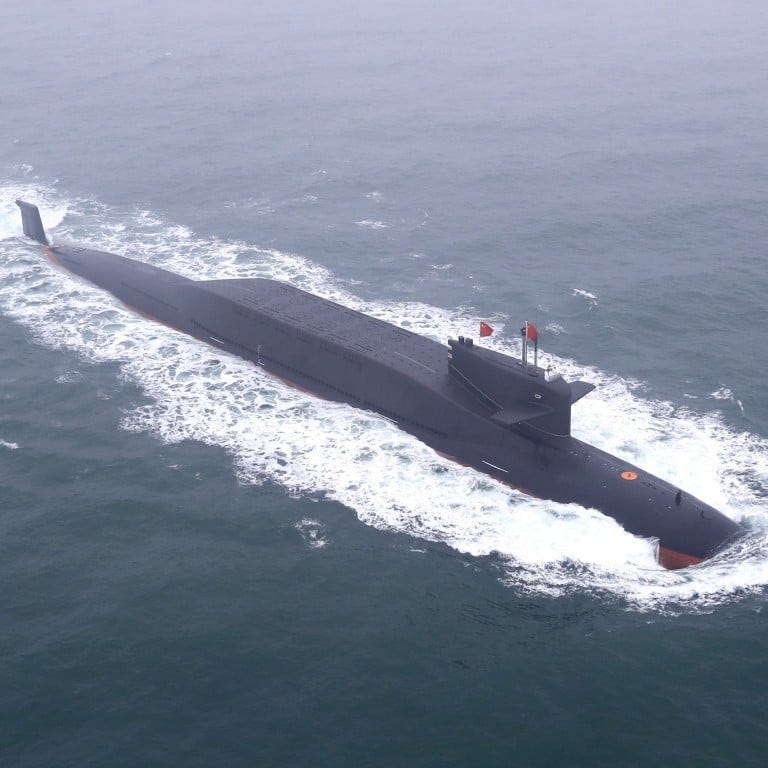Exploring China's Claims on Submarine Detection via 6G Technology
Written on
Chapter 1: The Promise of 6G in Naval Detection
Recent assertions from Chinese researchers suggest the capability to detect non-natural underwater sounds through advanced 6G sensors. This technology could potentially allow for submarine detection and establish a new communication method for submarines.
The research team from the National University of Defence Technology published their findings on August 11 in the Journal of Radars, indicating significant potential applications for underwater vessel detection and other areas.
What is 6G?
6G, the next evolution in signal technology, is anticipated for future mobile devices, but its full realization is still a decade away. My previous discussions on this technology raised questions about its necessity, like the ability to send holograms via smartphones—a fascinating concept, yet seemingly unnecessary.
Operating around 110 Gigahertz, 6G falls within the terahertz band—between microwave and infrared frequencies, typically ranging from 0.1 THz to 10 THz. Notably, China is already employing terahertz screening devices at airports to identify concealed illegal items.
What the Researchers Did
The team utilized sensors designed to detect tiny waves (ranging from 10 to 100 nanometers) on the water's surface, analyzing the interference patterns of returned signals. Although the report did not specify when the experiment took place, it was conducted in an unspecified area off Dalian in the Yellow Sea, under favorable weather conditions with some wave activity.
To simulate submarine noise, they used an artificial sound source, and the detection equipment was mounted on a boom from a research vessel. According to the researchers, a submarine traveling at high speeds generates considerable noise that reverberates to the water surface, causing surface vibrations.
Could This Detection Method Work?
With a background in physics and oceanography, I find this claim stretching credibility. Under ideal conditions—like calm seas—some detection might be feasible. Previous innovations, such as software developed by France that analyzes satellite-observed surface wave patterns to detect submarines, offer some insight into this field.
Submerged submarines might create specific wake patterns depending on their speed and depth, but these are challenging to detect below 100 meters. However, submarines that go deeper could still produce detectable internal wakes.

Challenges in Detection
Despite the intriguing nature of this experimental setup, it faces numerous challenges, such as filtering out background noise and accounting for weather conditions. Additionally, the noise level of the artificial sound source used in the experiment raises questions. Did they emulate a specific submarine model? It’s feasible that China has data on various foreign submarines, given their extensive monitoring efforts in contested waters.
For instance, the USS Connecticut, a Seawolf-class submarine, collided with an uncharted underwater mountain in the South China Sea, where China has deployed numerous sensors. While Seawolf submarines employ a pump jet rather than a traditional screw, they produce a different noise signature, complicating detection efforts.
Operational Doctrine of Strategic Submarines
Strategic ballistic missile submarines (SSB/SSBN) are critical to the defense strategies of superpowers, including India and Pakistan. Although details about these submarines are closely guarded, they typically employ specific tactics while on patrol:
- Slow Movement: They often move at speeds below 4 knots.
- Hiding: Utilizing thermoclines in the ocean for concealment.
- Stationary Listening: By minimizing movement, they can better utilize passive sonar for environmental monitoring.
While submarines are more visible during entry and exit from bases, they maintain patrols that overlap, enhancing deterrence.
The SCMP report notes that submarines traveling at high speeds create significant noise that can be detected at the surface.
Implications of the Research
Carl Bildt, Co-Chair of the European Council on Foreign Relations, expresses skepticism regarding the practicality of this detection method. He questions whether such technology could genuinely alter the dynamics of submarine warfare, suggesting that if it were a game-changing development, China would likely keep it under wraps until it was fully operational.
The timing of this report raises further questions: Is this an attempt at misinformation? If the technology holds significant potential, why publicize it now?
Nevertheless, it’s crucial to remain vigilant regarding such advancements, as they will undoubtedly attract the attention of military strategists in the US and beyond.
This video examines how China plans to dominate naval warfare with new radar technologies capable of detecting submarines from the air.
Chapter 2: The Future of Submarine Detection Technology
This video discusses the revolutionary changes in submarine detection methods under the Aukus alliance, highlighting the strategic implications for naval warfare.
Follow me for diverse insights into various topics, including technology, geopolitics, and more!